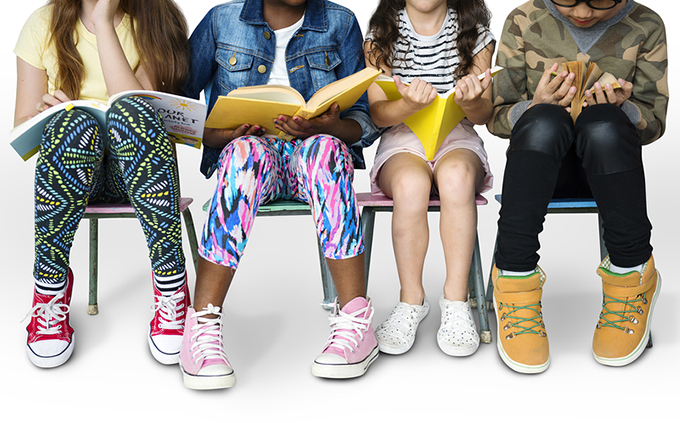
How Do I Choose Athletic Shoes for my Child?

When a child or teenager complains of foot pain, a common culprit is often poorly-fitting shoes, according to Dr. John Blanco, a pediatric orthopedic surgeon at HSS. “One of the first things I look at when a child comes to my office is the shoes they’re wearing. Shoe wear is very important in treating children with foot pain.”
Dr. Blanco says a sneaker should fit well in terms of length and width, be properly supportive, have an appropriate arch, and it needs to be made of sturdy materials. “If we could make sure shoes were the right size, had good arch support and were laced up appropriately, we could solve a significant share of the basic foot problems we see in kids,” he says.
While many people have no problem with shoes they buy off the shelf, a specialty store with experienced staff can measure the foot and help select the best shoe for one’s foot type, according to Dr. Blanco.
You don’t need to spend a lot of money to get a good shoe. “The price of the sneaker has little to do with the quality of the shoe,” he says. “I see kids all the time with shoes that may look fancy on the outside and are expensive, but you look inside and see that they don’t provide support.“
Dr. Blanco says it’s also important for young people to lace up their shoes each time they put them on. Many kids are in the habit of slipping their foot into and out of a shoe without lacing it up appropriately, and this affects the way the shoe fits and the support it provides. A loose shoe can also leave a kid more prone to injury if playing a sport.
How to Choose
When choosing sneakers, Joseph Molony, a physical therapist and coordinator of the Young Athlete Program at HSS, recommends people start with a good quality name-brand shoe. You don’t need to buy a top-of-the-line luxury model, but a solid name-brand shoe will generally be well constructed of quality materials. He offers additional advice when shopping for sneakers:
Identify which brand fits best. Each company uses a specific foot mold when designing shoes. You may need a narrower heel, a wider toe box or a higher arch. Try on different brands to see which design matches up to your foot structure. Once you’ve identified which one fits well, you can generally stick with that brand.
- The shoe should fit comfortably and snugly with no gaps between your foot and the inside of the shoe. For example, someone with a narrow foot may not do well with a shoe with a wide toe box.
- The shoe shouldn’t be so tight that it rubs against your foot in certain spots.
- Your heel should not rise up out of the shoe when you walk. Even if the shoe feels comfortable, the heel should not slide up and down.
- If you find a shoe you like in a store and it fits well, you can see if it’s available online for less money. If the color you want isn’t available in the store, you may also be able to find it online.
- Runners may want to alternate running shoes every other day, since shoe materials often take some time to recover their shape. You end up buying the same number of shoes each year when you rotate them.
What about Gym Class?
Parents often ask if their child needs to change their shoes for gym class. Dr. Blanco says it depends on the shoes the kid is wearing that day. Fashion sneakers with no support are not appropriate for gym class. For young people who tend to have foot pain or problems, it’s even more important to wear a good, supportive shoe that’s suitable for athletic activity. Dr. Blanco says it may be a good idea to keep an extra pair of shoes in one’s locker for gym class.
Although cross-training shoes can be used for various athletic activities, many sports require the right shoes, according to Molony. “I see a lot of people using running shoes for court and field sports, and that’s not good.”
He also says it’s important to retire shoes once they’re worn out. He says many teens hold on to their shoes too long. “The main problem I see is that people wear their shoes to the very end. The shoelaces are broken, their toe is ripping through the side of the shoe, the sole is worn down, but they love the shoes.”
Once a shoe is worn out, it no longer provides the support and protection needed for day to day activities, let alone sports.
